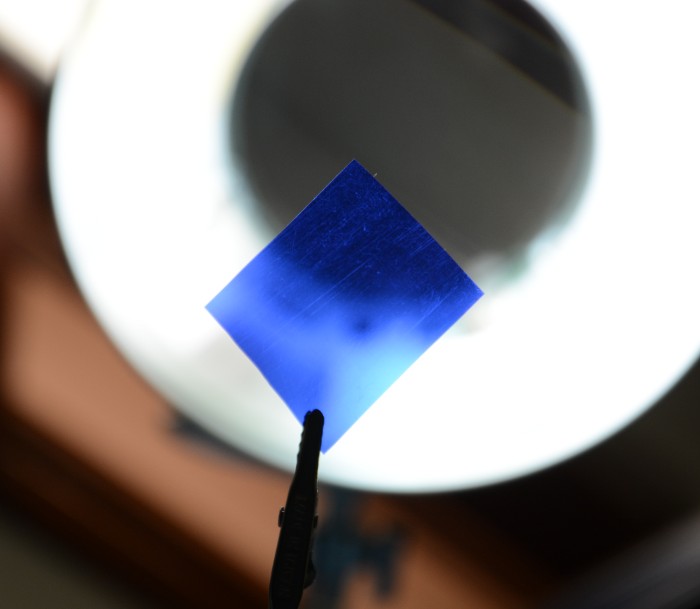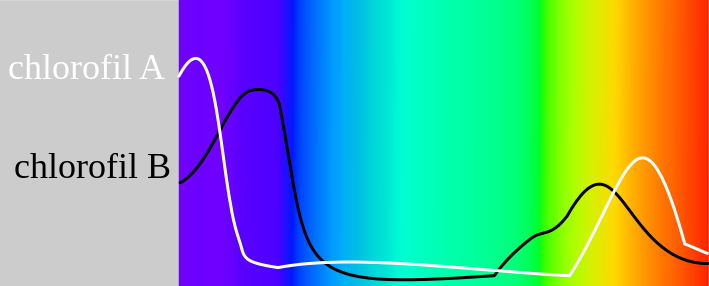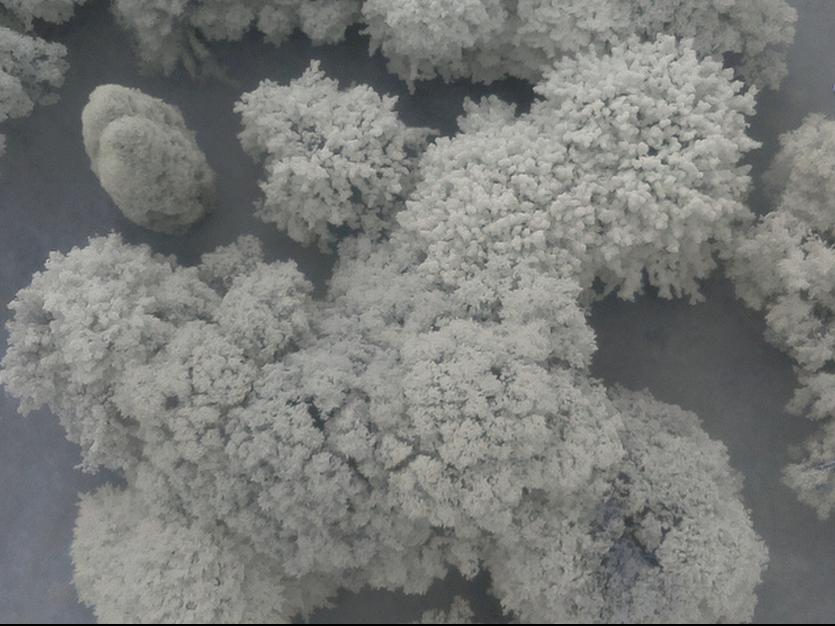| So your new Pi NoIR has plopped through the letterbox, and you’ve unpacked it. There’s a little square of blue gel in there. What’s it for?  Thanks to Andrew Back for the picture! Click to read more about his adventures with Pi NoIR on the Designspark blog. If you’ve been reading our posts about why we developed an infrared camera board keenly, you’ll have noticed that we mentioned a lot of interest from botanists, who use infrared photography to work on the health of trees. We started to read up about the work, found it absolutely fascinating, and thought you’d like to get in on it too. A short biology lesson follows. Photosynthesis involves chlorophyll absorbing light and using the energy to drive a charge separation process which ultimately (via a vast range of hacked together bits and pieces – if you believe in intelligent design, you won’t after you’ve read the Wikipedia page on chlorophyll) generates oxygen and carbohydrate. Here’s a nice picture of the absorption spectrum of two sorts of chlorophyll, swiped from Wikipedia: Notice that both kinds of chlorophyll absorb blue and red light, but not green or infrared. So: why are trees green? The graph above shows you that it’s because green is what’s left once the chlorophyll has grabbed all the long wavelength (red) and short wavelength (blue) light. Let’s say you’re a biologist, and you want to measure how much photosynthesis is going on. One way to do this would be to look for greenness, but it turns out an even better method is to look for infrared and not blue – this is what the filter lets us do. Bright areas in a picture filtered like this mean that lots of photosynthesis is happening in those spots. There’s a long history of doing this stuff from space (the Landsat vehicles, for example, look at the Earth across a very broad spectrum), and Public Lab have done loads of research as part of their Infragram project (and associated Kickstarter) to find ways of modifying cameras, and to find cheap alternatives to expensive optical bandgap filters. Our friend Roscolux #2007 Storaro Blue (that’s the blue thing’s full name) turns out to be a great example – we buy it on giant reels and the guys at the factory in Wales where we make the Raspberry Pi and both kinds of camera board cut it up into little squares for you to use. It’s not very expensive at all for us to provide you with a little square of blue, and it adds a lot of extra functionality to the camera that we hope you’ll enjoy playing with. The work of the folk at Public Lab has been absolutely vital in helping us understand all this, and we’re very grateful to them for their work on finding suitable filters at low prices, and especially on image processing. We strongly recommend that you visit Public Lab’s Infragram to process your own images. We’re talking to Public Lab at the moment about working together on developing some educational activities around Pi NoIR. We’ll let you know what we come up with right here. We sent Matthew Lippincott from Public Lab an early Pi NoIR (and a blue thing), and he sent it up on a quadcopter to take some shots of the tree canopy, which he’s processed using Infragram, to show you what’s possible. We still have some to do in getting images taken with the filter absolutely perfect (notably in white balance calibration), but we hope that what you can do with the filter already gives you a feel for the potential of an infrared camera. In a way, it’s a shame we’re launching this in the autumn: there’s less photosynthesising going on out there that there might be. But you’ll still get some really interesting results if you go outside today and start snapping. |
A Semi-automated Technology Roundup Provided by Linebaugh Public Library IT Staff | techblog.linebaugh.org
Tuesday, October 29, 2013
What’s that blue thing doing here?
Subscribe to:
Post Comments (Atom)


No comments:
Post a Comment